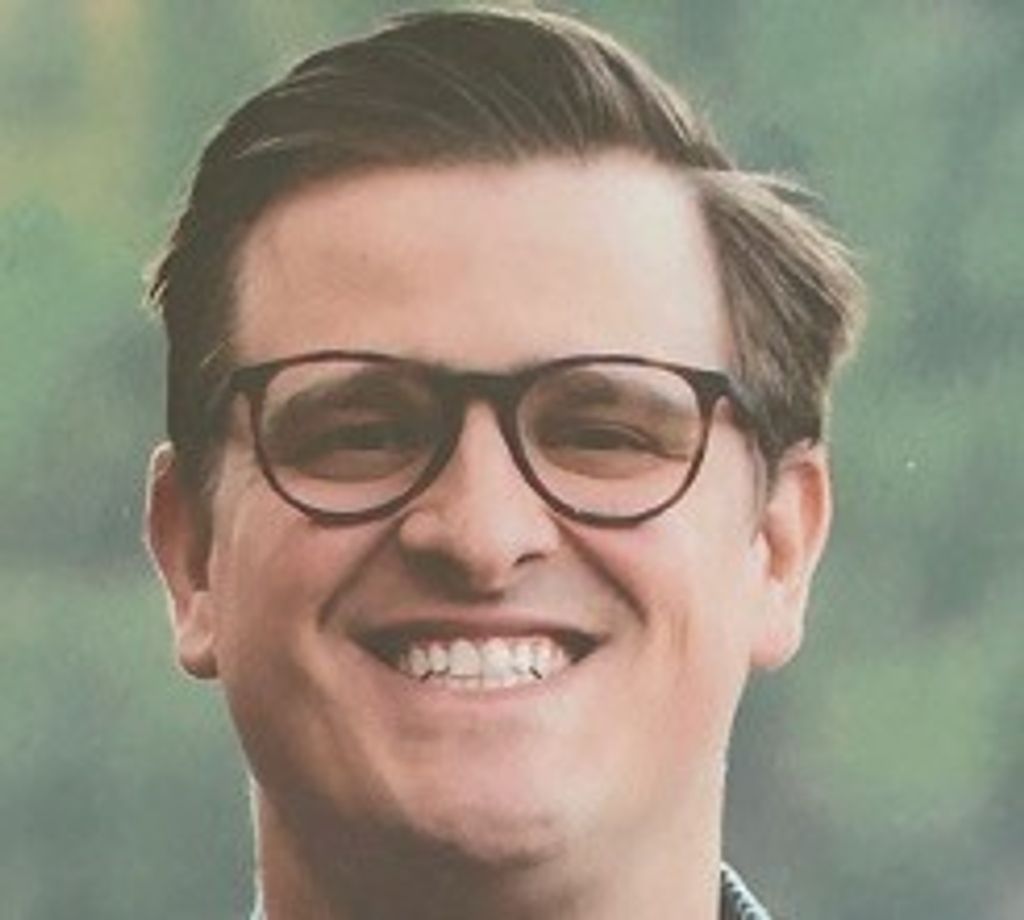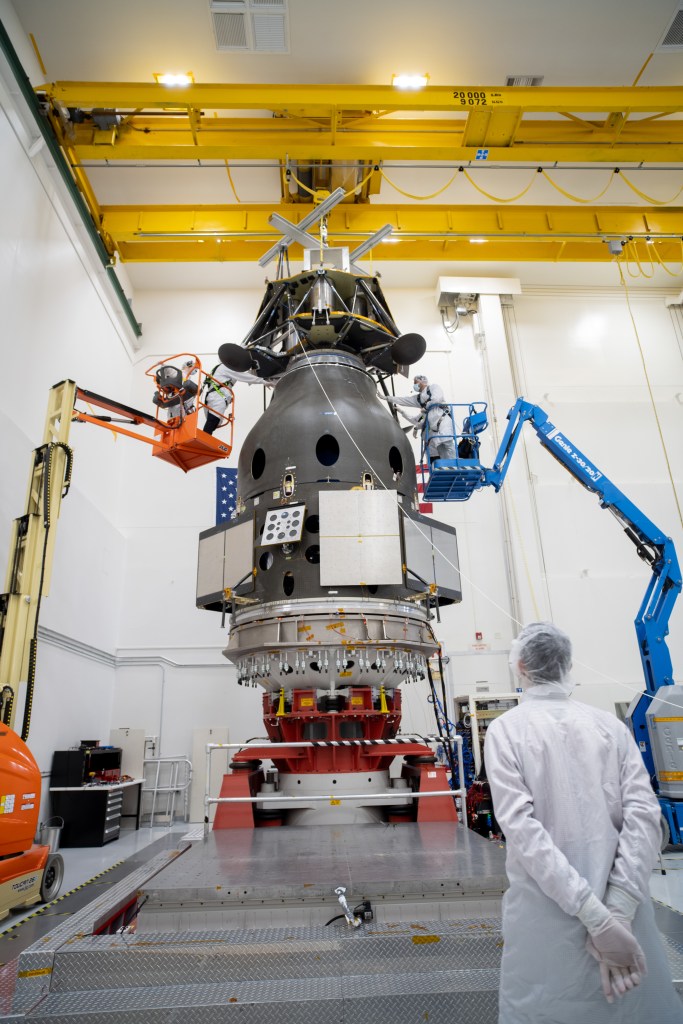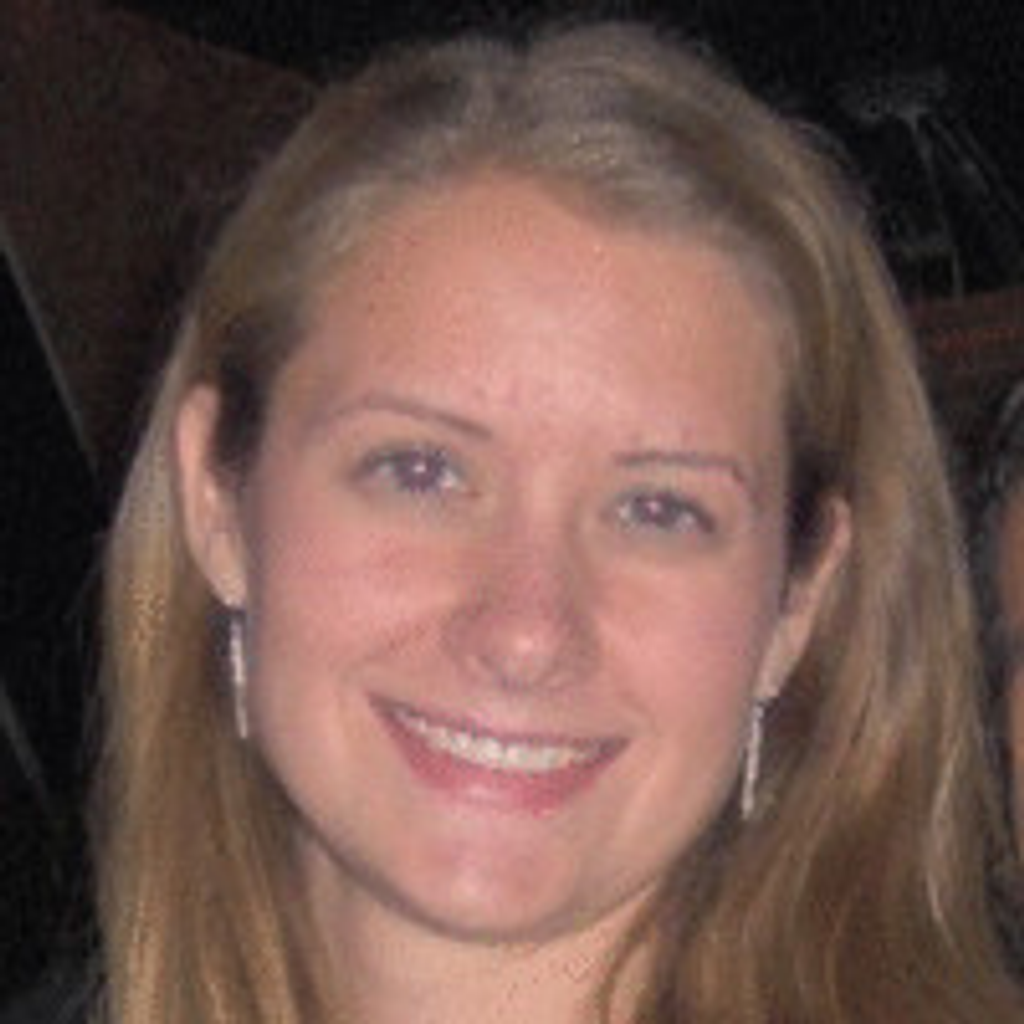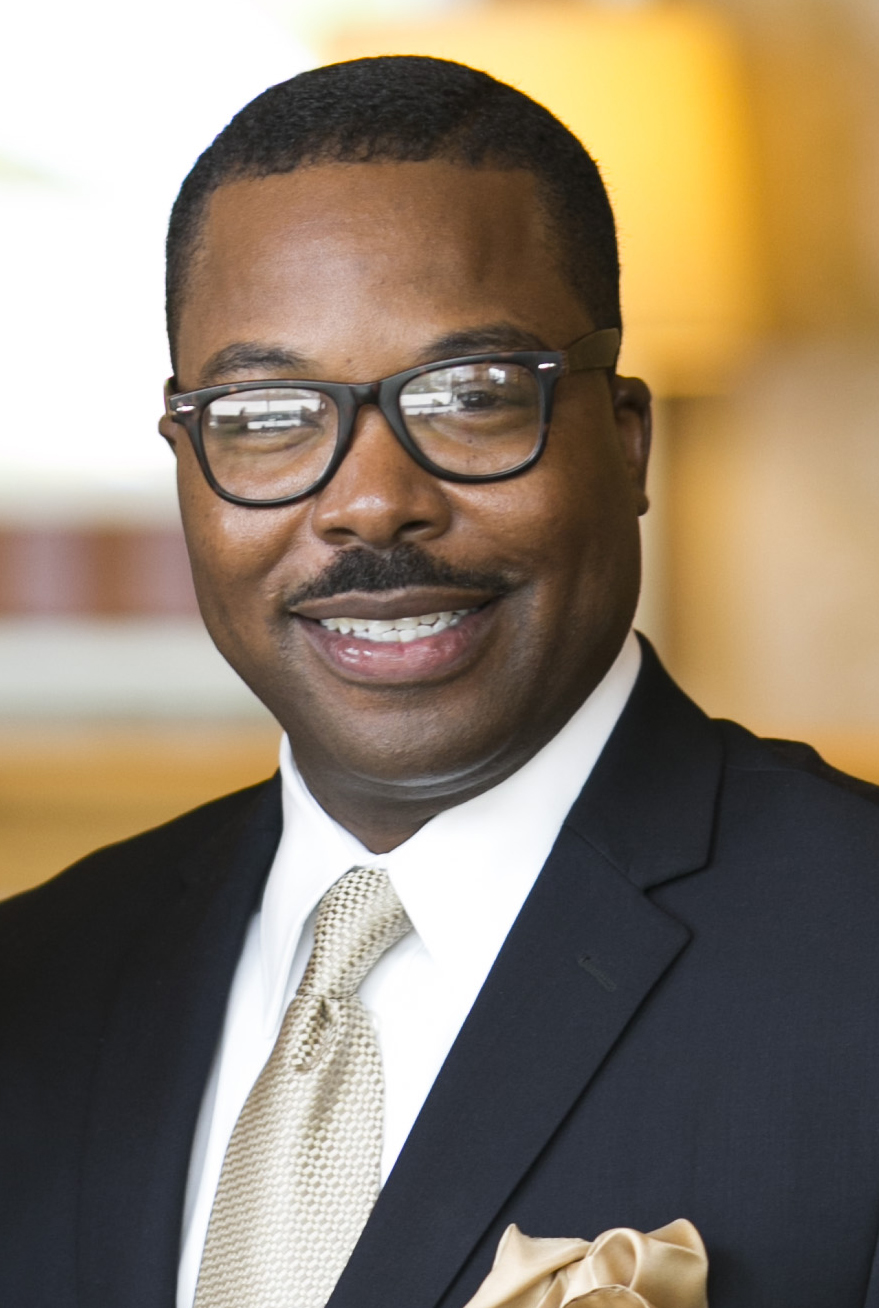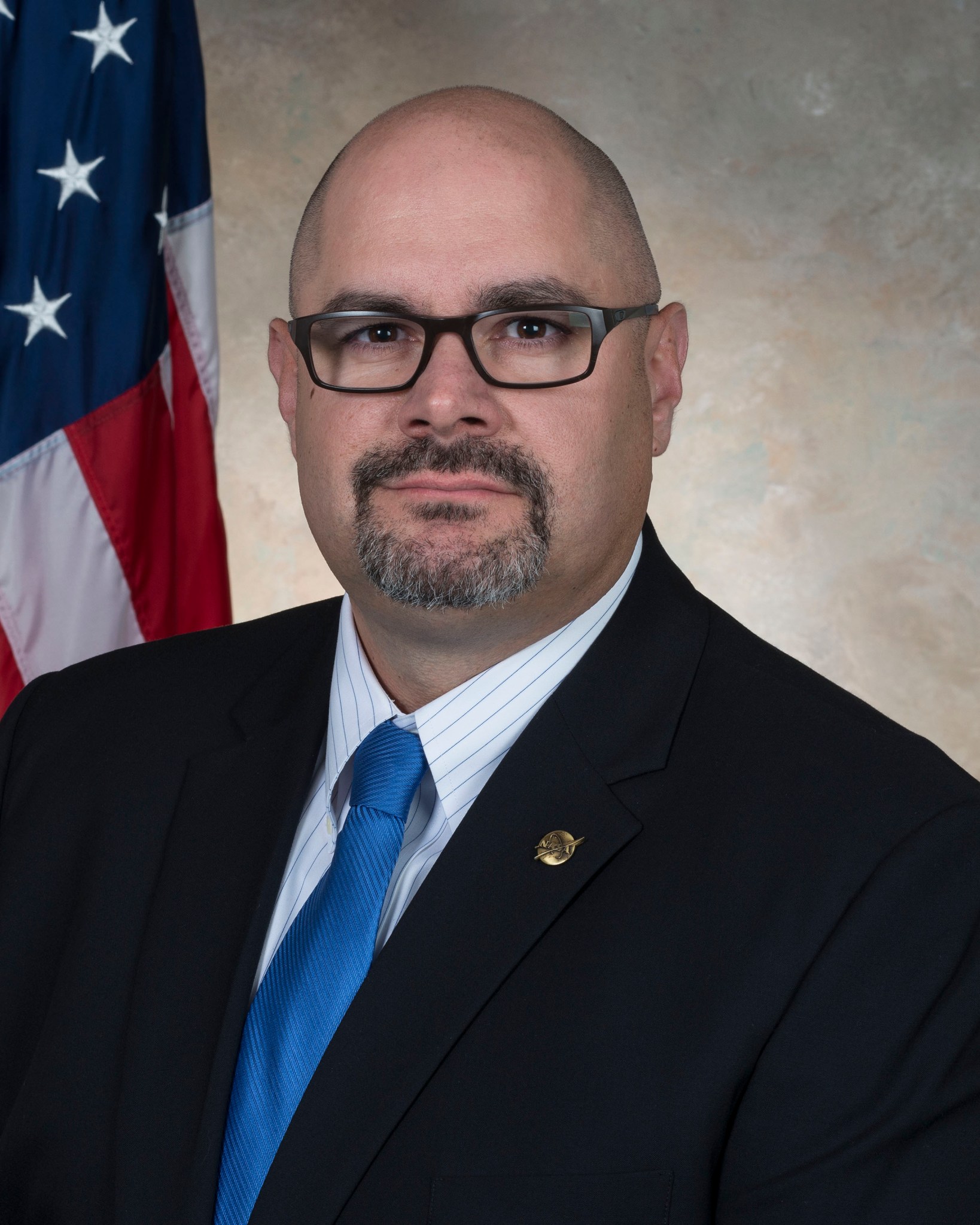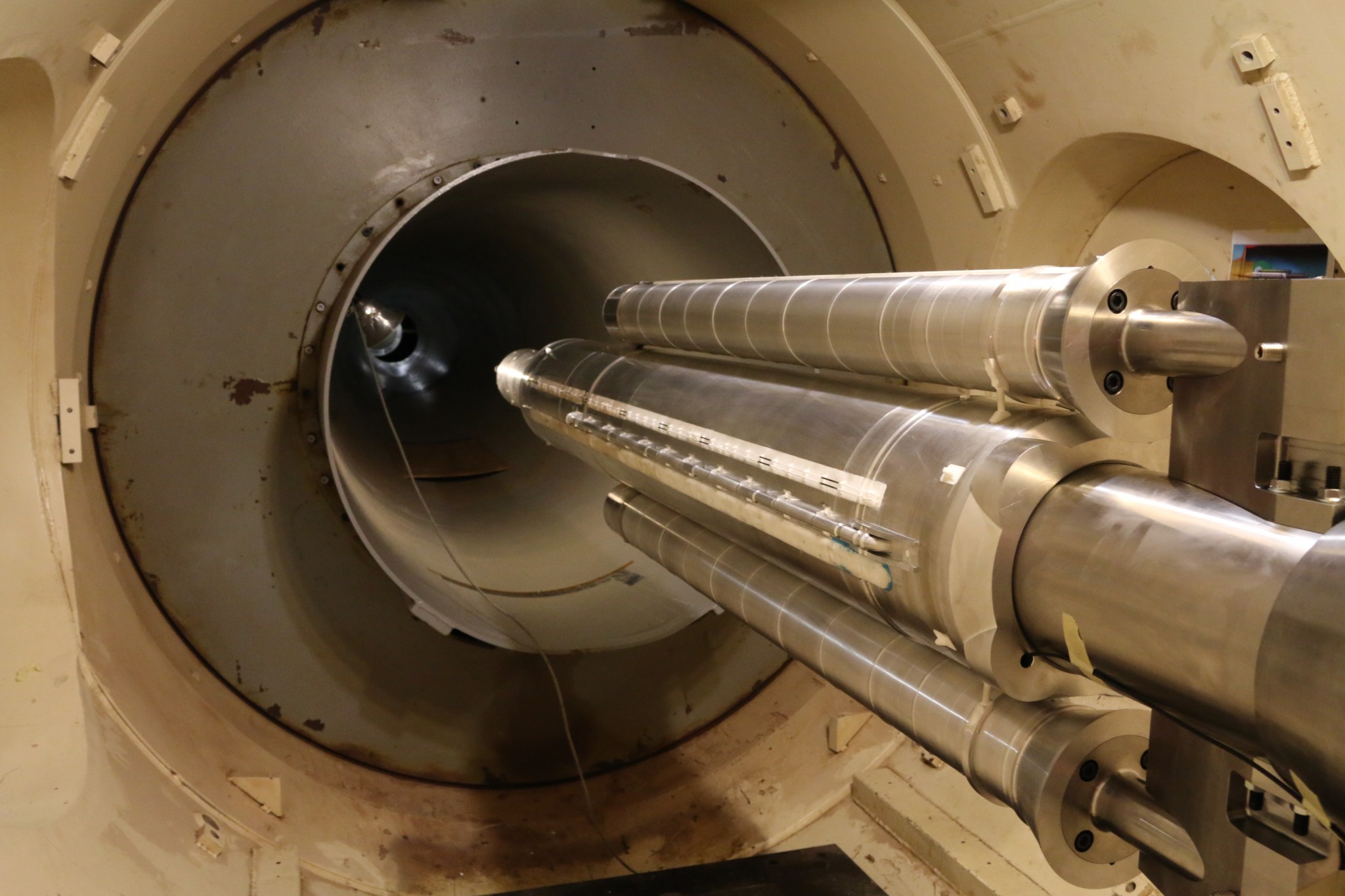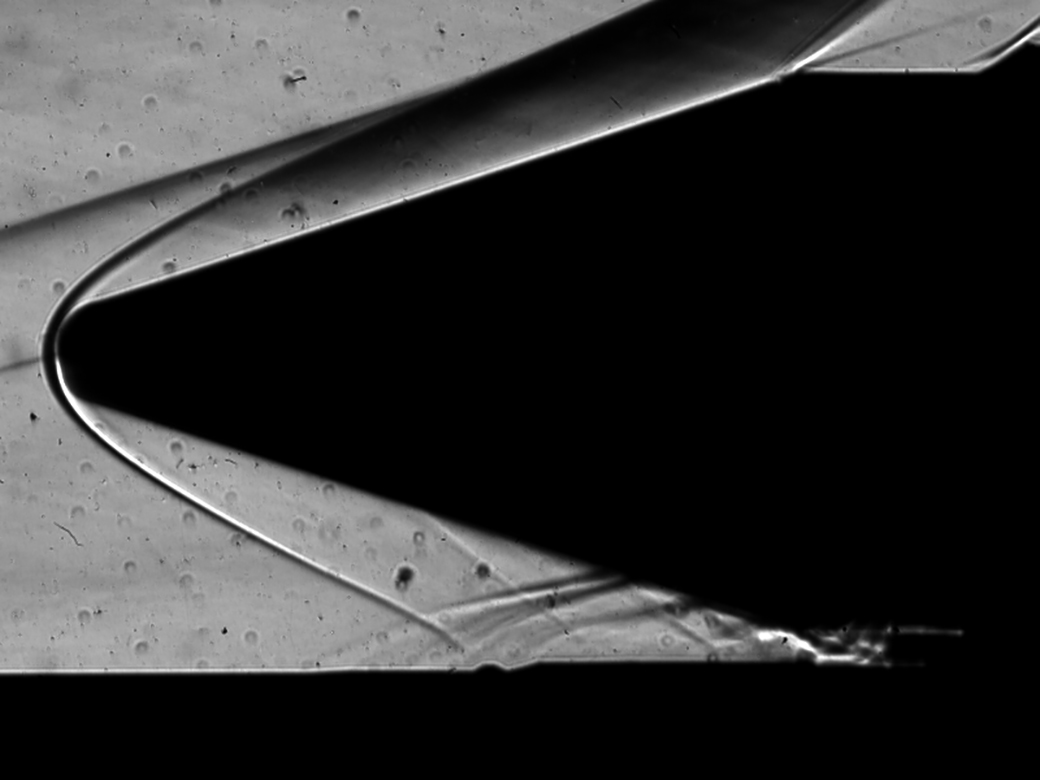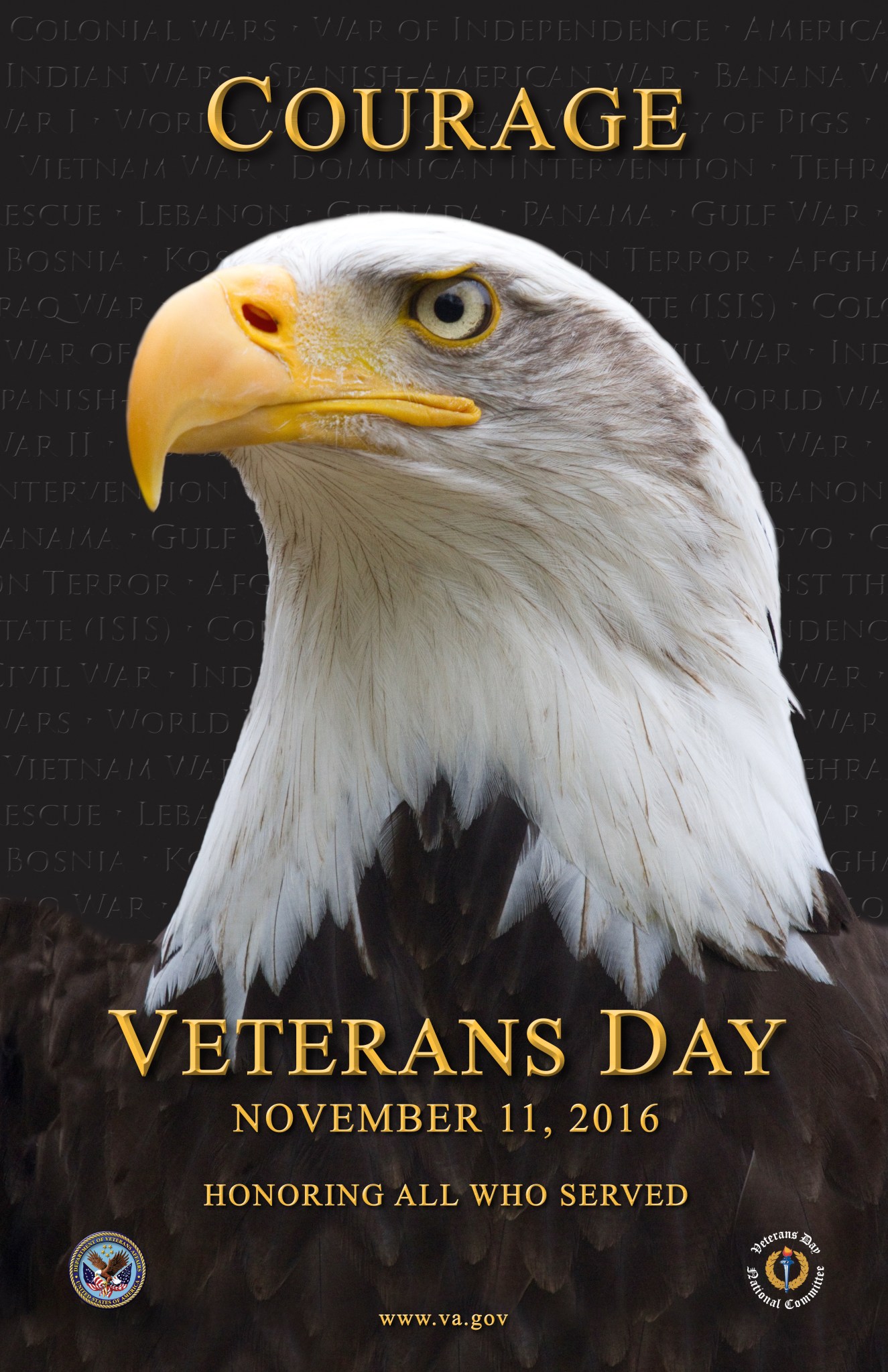In This Week’s Star
- Marcus Lea Named Director of Marshall’s Office of Human Capital
- Joseph Pelfrey Named Associate Director for Operations in Marshall’s Engineering Directorate
- NASA Administrator Praises Progress on Programs, Thanks Marshall Team
- NASA Uses Tunnel Approach to Study How Heat Affects SLS Rocket
- NASA Astronaut Kate Rubins, Crewmates Safely Return from Space Station
- Von Braun Symposium: NASA’s Journey to Mars Highlighted, Apollo Astronaut Visits Marshall and Bolden Honored
- NASA Administrator Charles Bolden Greets College Students at Marshall
- Marshall to Observe Veterans Day with Two November Events
- Marshall Team Members Take CFC Bus Tour, See Local Benefits
- This Week in NASA History: Space Shuttle Atlantis Returns to Work — Nov. 3, 1994
- Highlights of the Von Braun Symposium Featured on ‘This Week @NASA’
- Obituaries
Marcus Lea Named Director of Marshall’s Office of Human Capital
Marcus Lea has been named the director of NASA Marshall Space Flight Center’s Office of Human Capital, a position he will assume upon the upcoming retirement of Tereasa Washington. Appointed to the Senior Executive Service — the personnel system covering top managerial positions in federal agencies — in January 2015, Lea comes to Marshall from the National Nuclear Security Administration in Washington, where he serves as director of Human Capital Management.
Within Marshall’s Office of Human Capital, Lea will be responsible for the entire scope of the center’s workforce strategy and planning, organization and leadership development, academic affairs, training and incentives, federal labor relations and employee services and operations.
He brings 16 years of experience in federal human capital management to the position, including work in human capital policy development and administration, recruitment, outreach, employee and management relations, staffing and classification, compensation and benefits, executive resources, performance management, awards and incentives, training and career development and strategic workforce analysis and planning.
Prior to joining the National Nuclear Security Administration, Lea served as deputy of the Office of Human Resources and as director for Headquarters Human Resources Operations within the Department of Energy in Washington. Before joining the DOE, he was the civilian personnel officer for the Air Force District of Washington.
He began his career as an allowances and differentials analyst for the U.S. Department of State and served in progressively responsible leadership roles spanning all human resources disciplines for the Office of Personnel Management, the Air Force Materiel Command, the U.S. Air Force, the Defense Information Systems Agency and the Federal Motor Carrier Safety Administration.
A native of Durham, North Carolina, Lea earned a bachelor’s degree in business administration from Morehouse College in Atlanta, and a master’s degree in public administration from North Carolina Central University in Durham.
He and his wife, Djuana, have three children and currently reside in Haymarket, Virginia.
Joseph Pelfrey Named Associate Director for Operations in Marshall’s Engineering Directorate
Joseph Pelfrey has been named to the Senior Executive Service position of associate director for Operations in the Engineering Directorate at NASA’s Marshall Space Flight Center. He succeeds Steve Miley who, in February 2016, was reassigned as director of Marshall’s Procurement Office. The SES is the personnel system covering top managerial positions in federal agencies.
Reporting to the director of the Engineering Directorate, Pelfrey will assist in the leadership of an annual budget of more than $500 million and a diverse, highly-technical workforce of approximately 2,300 civil service and contract employees supporting Marshall’s entire mission portfolio.
Pelfrey has served in multiple technical leadership positions in his 16 years with NASA. He began his career as a contractor supporting development of International Space Station payload hardware before joining Marshall as a civil servant in 2004 as an aerospace engineer in the Science and Mission Systems Office. There, he held leadership roles in the ISS Program, including leading the development, integration and operations of multiple payload facilities and science experiments.
In 2008, Pelfrey was reassigned to Marshall’s Engineering Directorate as the design integration lead for the Ares I Upper Stage. He was then named engineering task manager for the Space Launch System Spacecraft/Payload Integration and Evolution Office in 2011 and, subsequently, manager of the MSFC Commercial Orbital Transportation Services Project.
Since 2012, Pelfrey has served as deputy manager and, most recently, manager of the Exploration and Space Transportation Development Office in the Flight Programs and Partnerships Office. In this role, he is responsible for leading the team managing Marshall’s Commercial Crew Program, Advanced Exploration Systems portfolio, Orion Launch Abort System, SLS secondary payloads, robotic and human landers and architecture activities in support of the Human Exploration and Operations Mission Directorate. He has also led efforts to define and implement SLS secondary payload integration, Europa spacecraft propulsion and Marshall’s strategic portfolio.
A graduate of NASA’s Mid-Level Leader Program, Pelfrey completed a detail assignment in the Office of Chief Financial Officer at NASA Headquarters in 2013, supporting the annual budget formulation activities for the agency. He has also completed Marshall’s Leadership Development Series and graduated from the Federal Executive Institute in Charlottesville, Virginia.
After completing multiple executive leadership development programs, as well as a detail assignment in the Marshall Engineering Directorate, Pelfrey successfully completed the SES Candidate Development Program in October 2016.
A native of Cheraw, South Carolina, Pelfrey earned a bachelor’s degree in aerospace engineering from Auburn University, where he currently serves as a member of the Aerospace Engineering Advisory Council.
He and his wife, Nicole, live in Huntsville and have one daughter.
NASA Administrator Praises Progress on Programs, Thanks Marshall Team
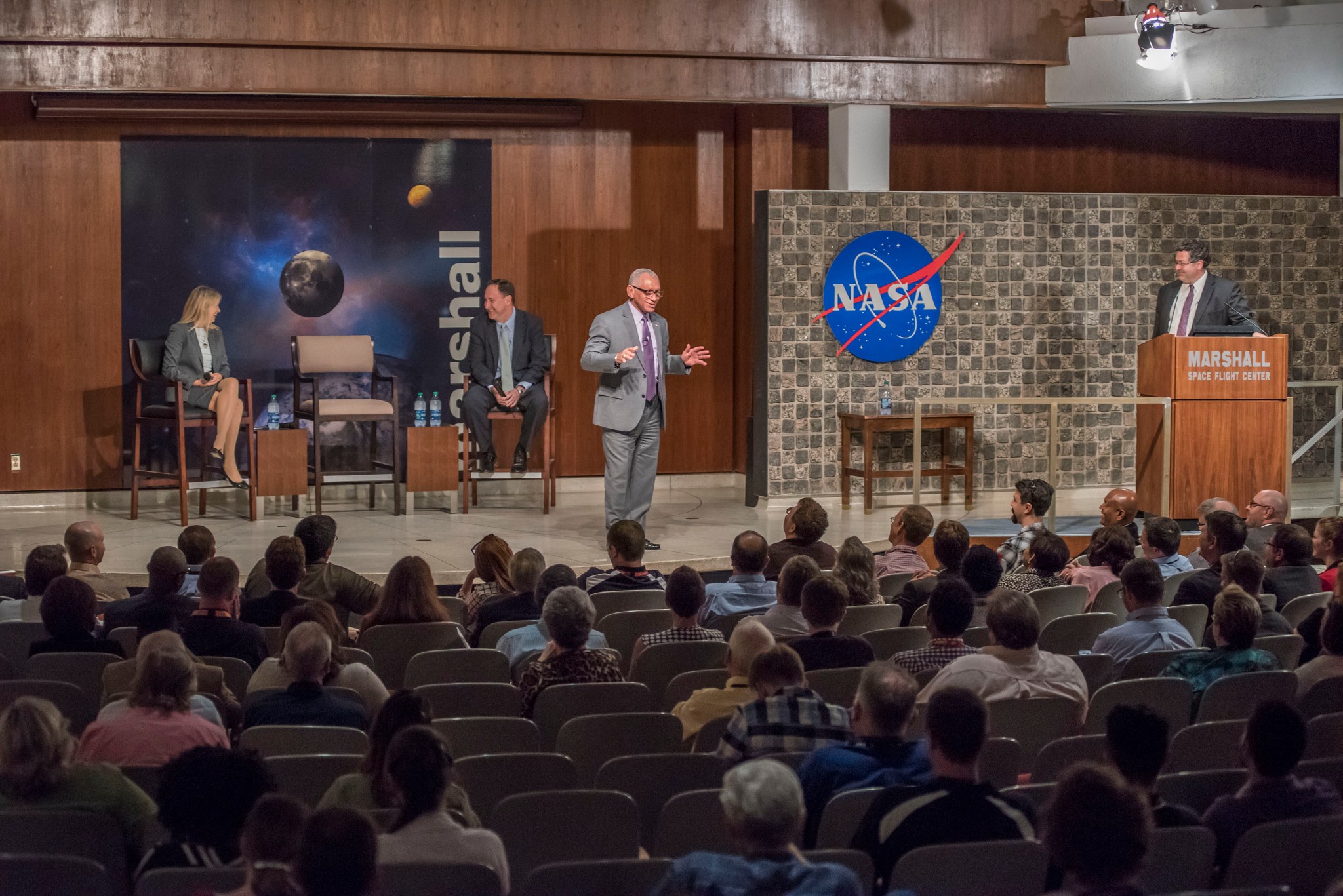
NASA Administrator Charles Bolden talks with Marshall Space Flight Center team members in Morris Auditorium during an all-hands meeting Oct. 27. Bolden, who also attended the American Astronomical Society’s annual Wernher von Braun Symposium, said he could think of no better place to celebrate advancements in space exploration and the Journey to Mars than Marshall and Huntsville, where a visionary von Braun planned expeditions to Mars even as he developed the rockets that took Apollo astronauts to the moon. Bolden praised the progress he’s seen on the Space Launch System and other programs during his seven years as administrator, milestones delivered by the workforce at Marshall and agency wide. “I wanted to thank all of you,” he said. “We’re the best space program in the world. I could not be more confident.” On stage with Bolden are, from right, Marshall Director Todd May, NASA Associate Administrator Robert Lightfoot and Deputy Administrator Dava Newman. (NASA/MSFC/Fred Deaton)
NASA Uses Tunnel Approach to Study How Heat Affects SLS Rocket
By Megan Davidson
NASA’s new rocket, the Space Launch System, will hit high temperatures as it reaches speeds of more than 17,000 mph in just 8.5 minutes. So, how does heat affect the world’s most powerful rocket for human missions to deep space, including the journey to Mars? The answer just may be found in a special type of wind tunnel.
NASA engineers have teamed with CUBRC Inc. of Buffalo, New York, to better understand and analyze how the SLS is heated as it ascends into space. A 9 1/2-foot, 3-percent scale, full model of the initial configuration of the SLS rocket was designed and built for the first phase of aerodynamic heating tests in CUBRC’s Large Energy National Shock Tunnel. The initial SLS configuration will be used for the first, uncrewed flight of the SLS and Orion spacecraft in 2018, called Exploration Mission-1.
Aerodynamic heating is caused by the friction between the air and the vehicle surface as it accelerates through the atmosphere. Typically, aerodynamic heating is most significant for the SLS vehicle during the second minute of flight, when the vehicle accelerates from approximately Mach 1 to Mach 4.5. The shock tunnel generates airflow at both supersonic and hypersonic flight conditions, matching what the rocket’s environment will be like during ascent, including temperature, pressure and velocity.
The tests, lasting about 40 milliseconds each, reach speeds of Mach 3.5-5. Test measurements are made in three different ways. First, pressure and aerodynamic heating are measured at nearly 200 individual sensor locations on the test model. The second is through Schlieren imaging, which is an optical technique for visualizing supersonic flow around objects. Finally, temperature-sensitive paint is applied to critical regions of the test model and is imaged during the tests to provide additional insight into the heat distribution.
The SLS rocket configuration, with boosters attached, is tested at zero- and 5-degree angles of attack. In the wind tunnel, the angle of attack is the angle between the model and the oncoming airflow. At a zero-degree angle of attack, the airflow is exactly parallel to the vehicle. The boosters are removed from the model, and the remaining core stage is tested again at higher angles of attack of 15-20 degrees — an orientation observed following booster separation in nominal flight.
“Our primary objective for the test series is to gather conclusive aerodynamic heating model validation data, both before and after booster separation,” said Chris Morris, aerothermodynamics team lead at NASA’s Marshall Space Flight Center. The SLS Program is managed by Marshall. “These tests give us a lot of insight into how well our engineering and computer models do at predicting aerodynamic heating on the vehicle. The data is very important for certifying that the thermal protection system on the rocket will be sufficient to protect the rocket’s structure and vital systems inside it.”
A total of 21 tests were completed in early September for the first series. “These are impressive test models, as we have sought to capture geometric details of the vehicle’s external surface — some as small as 0.03 inches in model scale,” said Marshall’s Jason Mishtawy, test engineer on the project. “This level of resolution is necessary to properly simulate aerodynamic heating on many of the smaller features on the rocket.”
A second phase of tests will begin later this fall and use 10 1/2-foot models of the next evolution of the SLS rocket. “Both the crew and cargo configurations of the rocket will be tested, and the results will provide valuable insight into aerodynamic heating on these future versions of SLS,” Mishtawy said.
CUBRC also collaborated with NASA for SLS base heating tests, which used 2 percent scale models of the rocket and propulsion systems to gather data on the heating environments that the base of the rocket will experience upon ascent for both planned and unplanned flight conditions.
Davidson, an ASRC Federal/Analytical Services employee, supports the Office of Strategic Analysis & Communications.
NASA Astronaut Kate Rubins, Crewmates Safely Return from Space Station
NASA astronaut Kate Rubins, who became the first person to sequence DNA in space, returned to Earth Oct. 29 after a successful mission on the International Space Station.
Rubins and her crewmates Anatoly Ivanishin of the Russian space agency Roscosmos and Takuya Onishi of the Japan Aerospace Exploration Agency, touched down in their Soyuz MS-01 at 10:58 p.m. in Kazakhstan.
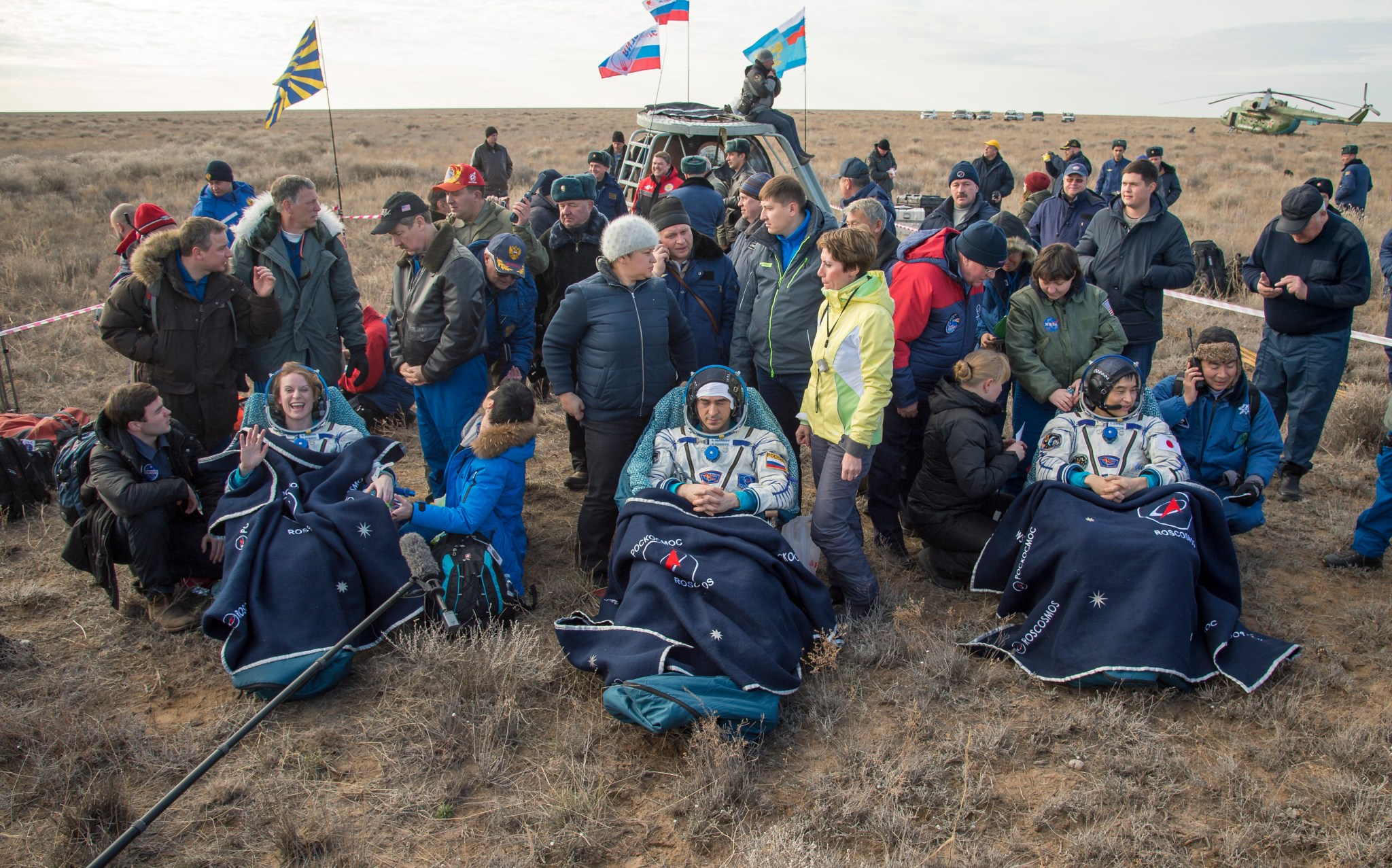
Rubins, who has a degree in molecular biology, contributed to several new studies taking place for the first time aboard the space station, including the Biomolecule Sequencer experiment. The ability to sequence the DNA of living organisms in space could enable astronauts to diagnose an illness or identify microbes growing in the space station and determine whether they represent a health threat. This technology could also be used in remote locations on Earth.
During her time on the orbiting complex, Rubins ventured outside the confines of the station for two spacewalks. During the first one on Aug. 19, she and NASA astronaut Jeff Williams installed the first international docking adapter. Outfitted with a host of sensors and systems, the adapter’s main purpose is to provide a port for spacecraft bringing astronauts to the station in the future. Its first users are expected to be the Boeing Starliner and SpaceX Crew Dragon spacecraft now in development in partnership with NASA’s Commercial Crew Program. During her second spacewalk on Sept. 1, Rubins and Williams retracted a spare thermal control radiator and installed two new high-definition cameras.
Together, the Expedition 49 crew members contributed to hundreds of experiments in biology, biotechnology, physical science and Earth science aboard the world-class orbiting laboratory during their 115 days in space.
The trio also welcomed three cargo spacecraft delivering several tons of supplies and research experiments. Rubins was involved in the grapple of Orbital ATK’s Cygnus spacecraft to the station in October, the company’s sixth contracted commercial resupply mission, and SpaceX Dragon’s ninth contracted mission in July. A Russian ISS Progress cargo spacecraft also docked to the station in July.
Rubins and Onishi have each spent a total of 115 days in space during their first mission. Ivanishin now has 280 days in space from two flights.
Expedition 50, with Shane Kimbrough of NASA in command and his crewmates Sergey Ryzhikov and Andrey Borisenko of Roscosmos, will operate the station for three weeks until the arrival of three new crew members.
Peggy Whitson of NASA, Thomas Pesquet of the European Space Agency and Oleg Novitskiy of Roscosmos are scheduled to launch Nov. 17 from Baikonur, Kazakhstan.
Von Braun Symposium: NASA’s Journey to Mars Highlighted, Apollo Astronaut Visits Marshall and Bolden Honored
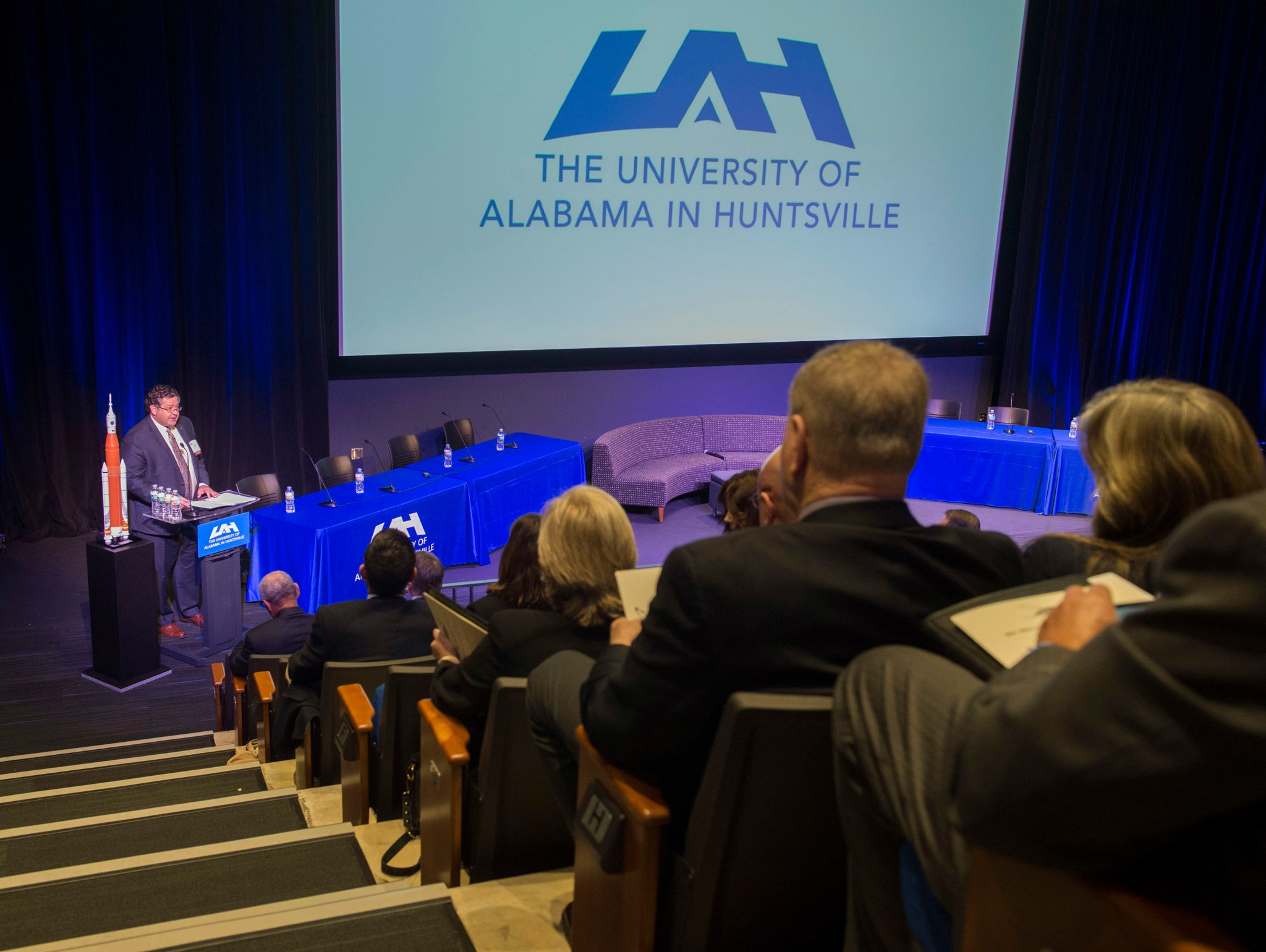
Discussions about the benefits, challenges and opportunities in advancing space activities as well as highlights of recent progress in science, engineering and technology, were the focus of the ninth annual Wernher von Braun Symposium Oct. 25-27. Held on the campus of the University of Alabama in Huntsville, the symposium was hosted by the American Astronautical Society and NASA’s Marshall Space Flight Center. Here, Marshall Center Director Todd May welcomes the crowd to the event and discusses the work taking place at Marshall that is advancing NASA on its Journey to Mars, including progress on the agency’s new rocket, the Space Launch System. (NASA/MSFC/Emmett Given)
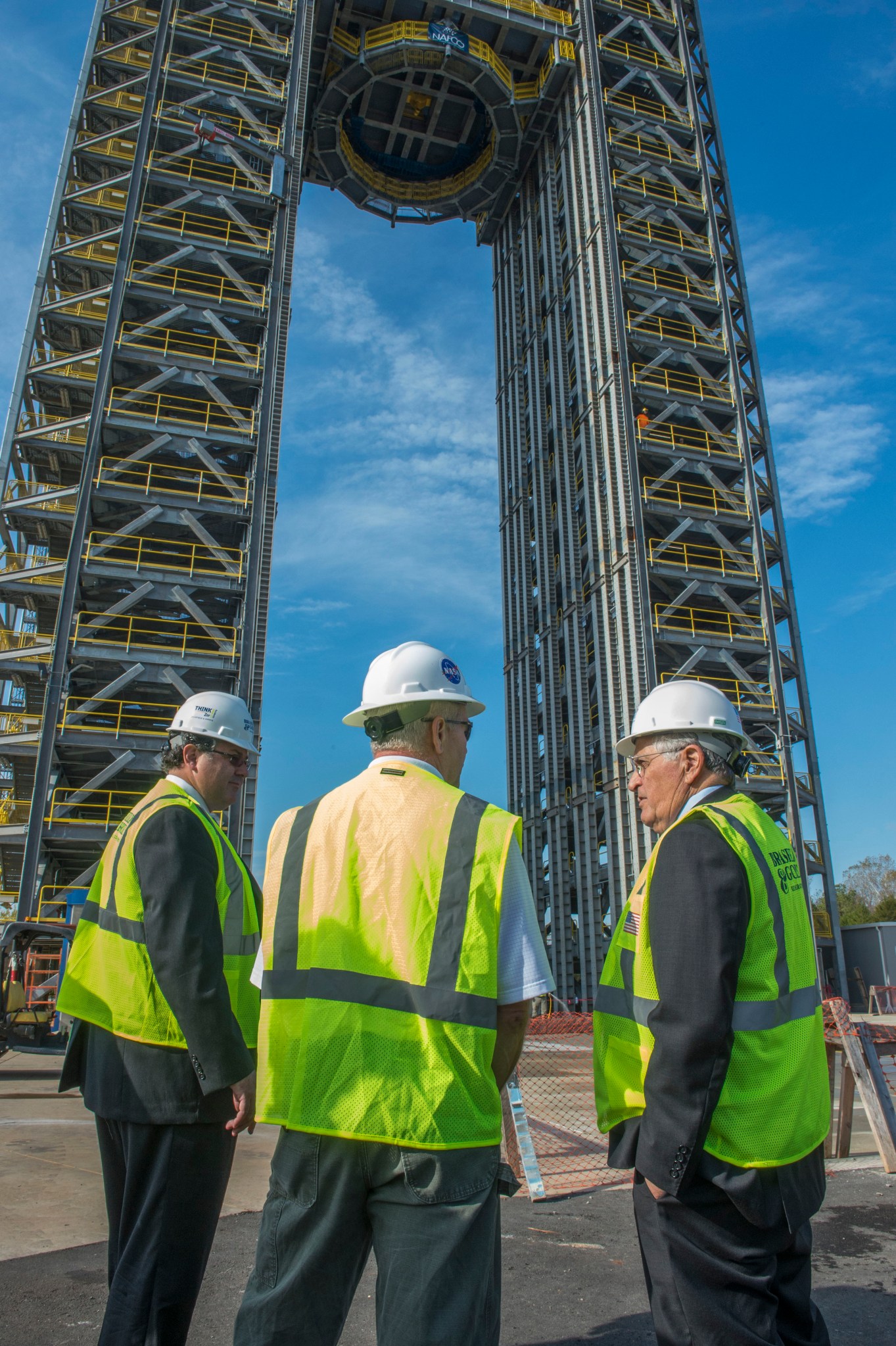
While in town for the symposium, Apollo 17 astronaut Harrison Schmitt, right, the only scientist to walk on the moon, tours Marshall with, from left, Marshall Center Director Todd May and Steve Doering, director of the SLS Stages Office. Schmitt first visited Marshall as a young scientist in the 1960s as he prepared for his lunar mission. He drew comparisons between the two visits while speaking with reporters. “I remember being extraordinarily impressed, as I was today, with the scale of the operation here. It’s just unbelievable, the things human beings are putting together and put together then for the Saturn V,” he said. “The Saturn V was clearly the enabling technology for the Apollo Program and for sending astronauts to the moon. And SLS is the enabling technology for ultimately putting people on Mars.” Here, he visits a new test stand designed to test SLS’s liquid hydrogen tank. The test stand will push, pull and twist the 130-foot-long tank to ensure it can withstand the incredible stresses of launch. (NASA/MSFC/Emmett Given)
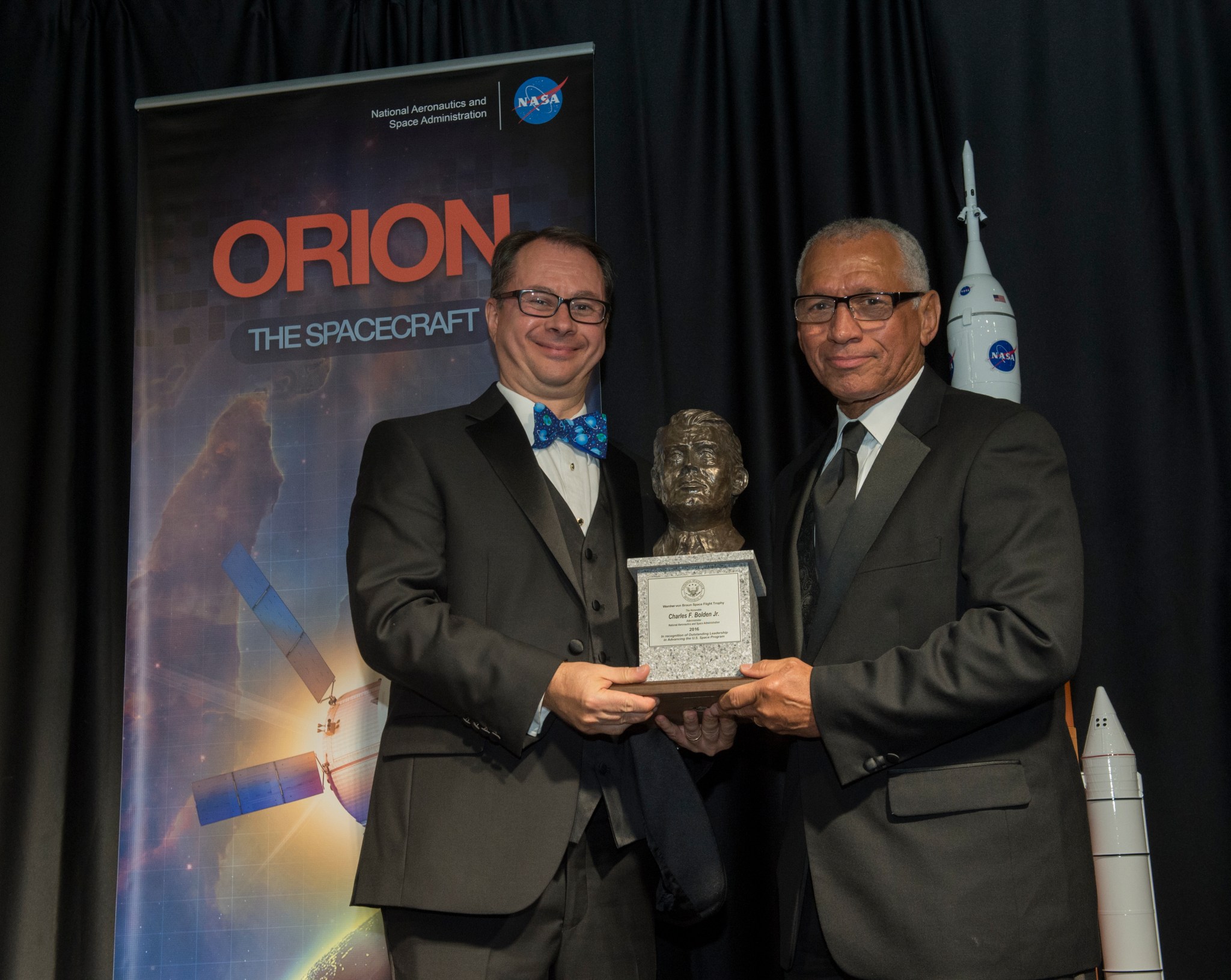
NASA Administrator Charles Bolden, right, is presented the von Braun Space Flight Trophy Oct. 27 at the symposium’s closing dinner by the Tom Koshut, associate vice president for Research and Economic Development at the University of Alabama in Huntsville. The trophy is awarded by the Huntsville chapter of the National Space Club to individuals or organizations that have made great achievement in advancing spaceflight programs and contributing to U.S. leadership in the fields of rocketry and astronautics. (NASA/MSFC/Emmett Given)
NASA Administrator Charles Bolden Greets College Students at Marshall
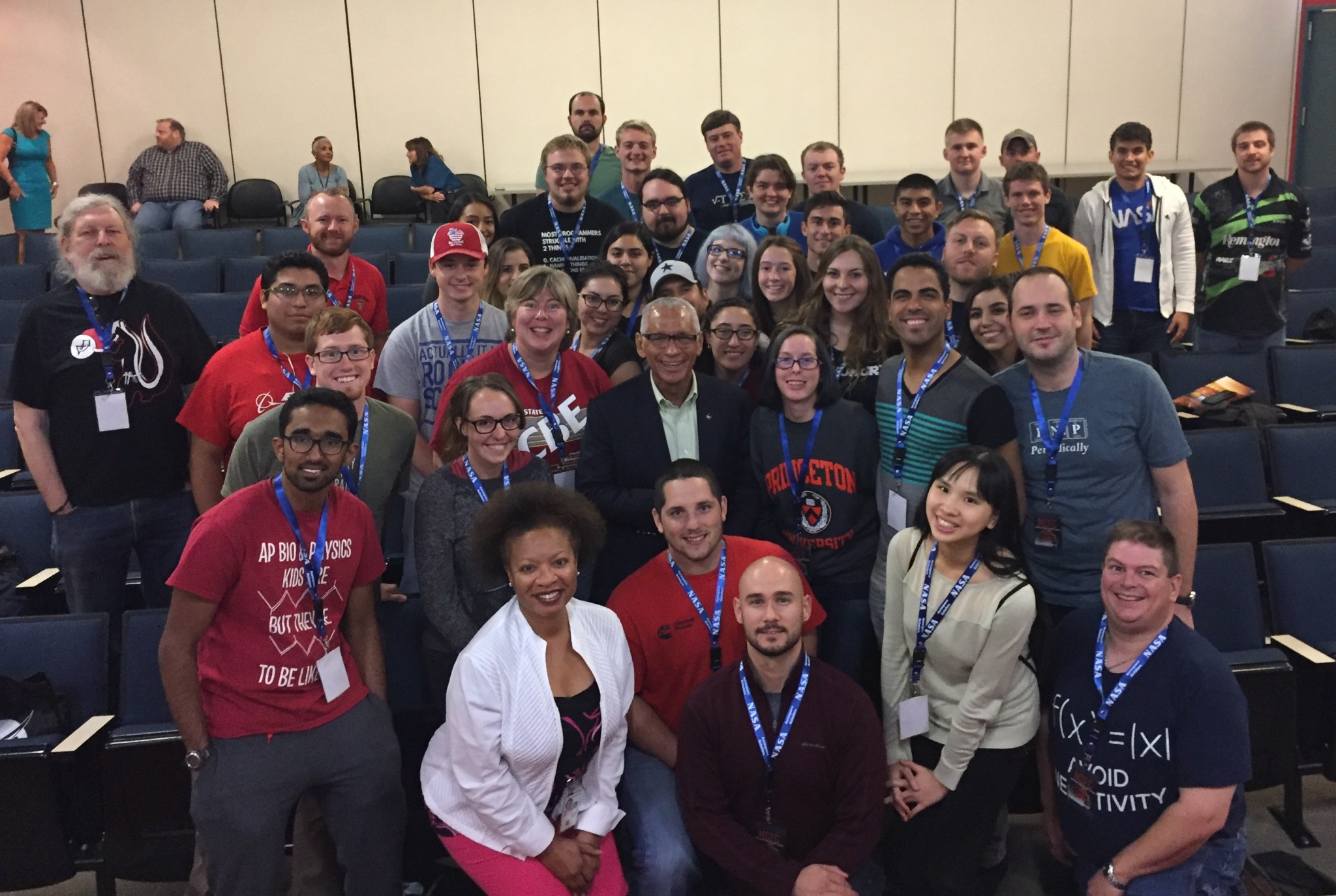
NASA Administrator Charles Bolden, center, greets college students attending the NASA Community College Aerospace Scholars workshop at NASA’s Marshall Space Flight Center Oct. 25-28. Underrepresented and underserved students having successfully completed the program’s five-week-long, web-based curriculum were eligible to attend this on-site experience. During the workshop, students formed fictional companies to develop and test prototype rovers for future Mars exploration. Aligned with NASA’s Journey to Mars and efforts to develop a diverse workforce experienced in aerospace and aeronautics, NCAS workshop students attend briefings with NASA engineers and scientists, tour NASA facilities, learn about future deep-space exploration with NASA’s Space Launch System rocket and are encouraged to pursue careers in the STEM fields — science, technology, engineering and mathematics. (NASA/MSFC/Maria Chambers)
Marshall to Observe Veterans Day with Two November Events
NASA’s Marshall Space Flight Center will honor Veterans Day in November with two events sponsored by Marshall’s Office of Diversity and Equal Opportunity.
Marshall will host its annual veterans’ meet-and-greet event from 8:30-10 a.m. Nov. 9 in Building 4200, Room P110. All team members who serve or have served in the U.S. armed forces are invited to attend. The Office of Diversity and Equal Opportunity will announce a guest speaker for the event in coming days on ExplorNet.
All Marshall team members are encouraged to take part in the annual Huntsville Veterans Day parade Nov. 11, the national day of observance for the federal holiday.
A van featuring the NASA logo will lead participating Marshall workers through downtown Huntsville. Parade participants are asked to gather between 9-10 a.m. in the parking lot across from the U.S. Post Office building at 615 Clinton Avenue West. The parade begins at 11 a.m. For a complete parade route and participant guidelines, click here.
Veterans Day originated as Armistice Day on Nov. 11, 1919, one year after the conclusion of World War I. In 1926, Congress passed a resolution for an annual observance, and Nov. 11 was established as a national holiday beginning in 1938.
For more information about Marshall’s Veterans Day activities, contact Marshall equal employment specialist Phyllis Olinger.
Marshall Team Members Take CFC Bus Tour, See Local Benefits
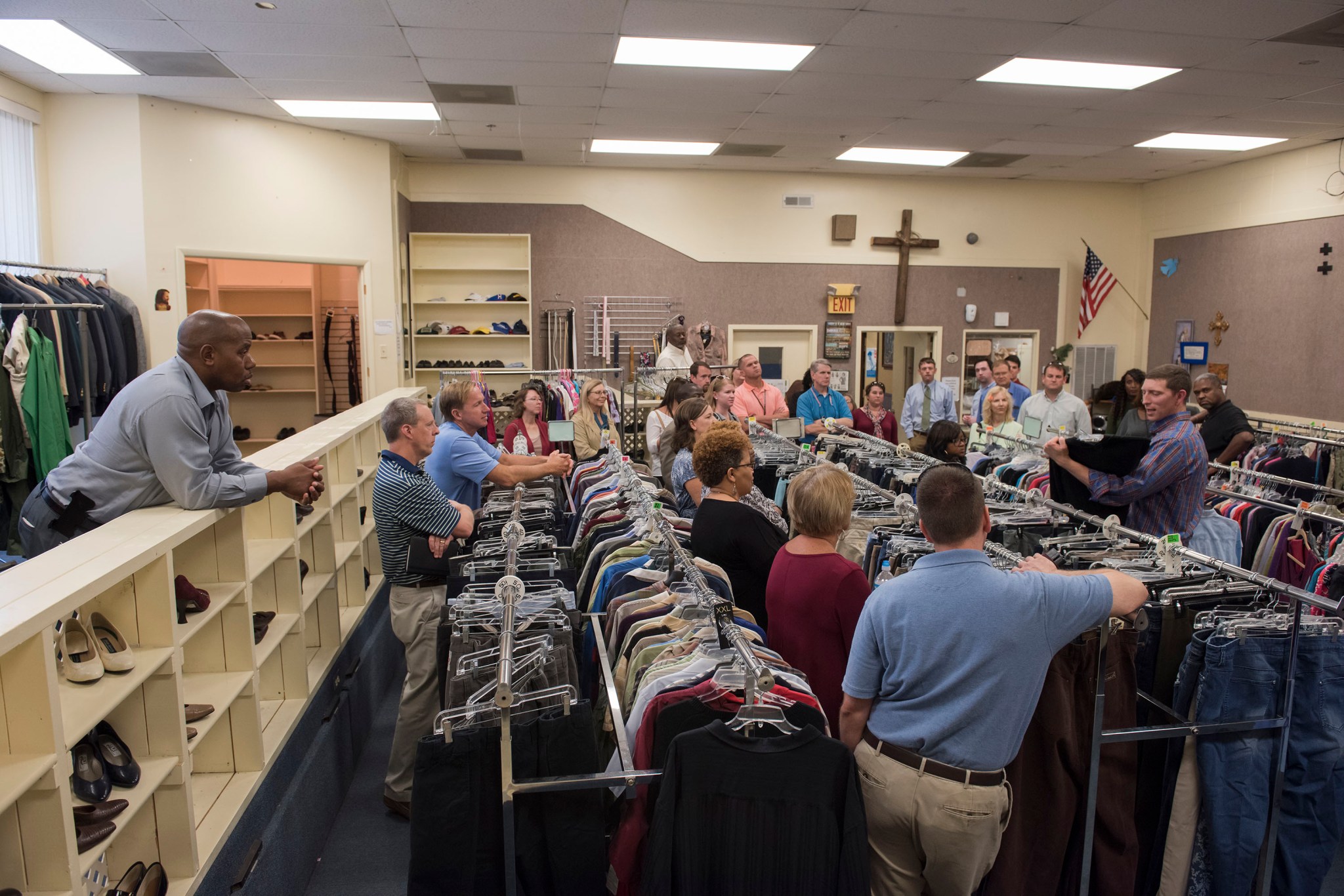
On Oct. 12, as a part of the Combined Federal Campaign bus tours, team members from NASA’s Marshall Space Flight Center’s participated in a guided tour of the Downtown Rescue Mission. The mission’s Director of Development and Volunteers Corey Buckner, far right holding shirt, leads Marshall team members through the facility and shared how the nonprofit organization provides aid and rehabilitation to the homeless living throughout northern Alabama and southern Tennessee. The Downtown Rescue Mission is one of more than 100 local organizations that benefit from CFC donations. For more information about CFC and how you can participate, please visit the CFC ExplorNet page. (NASA/MSFC/Charles Beason)
This Week in NASA History: Space Shuttle Atlantis Returns to Work — Nov. 3, 1994
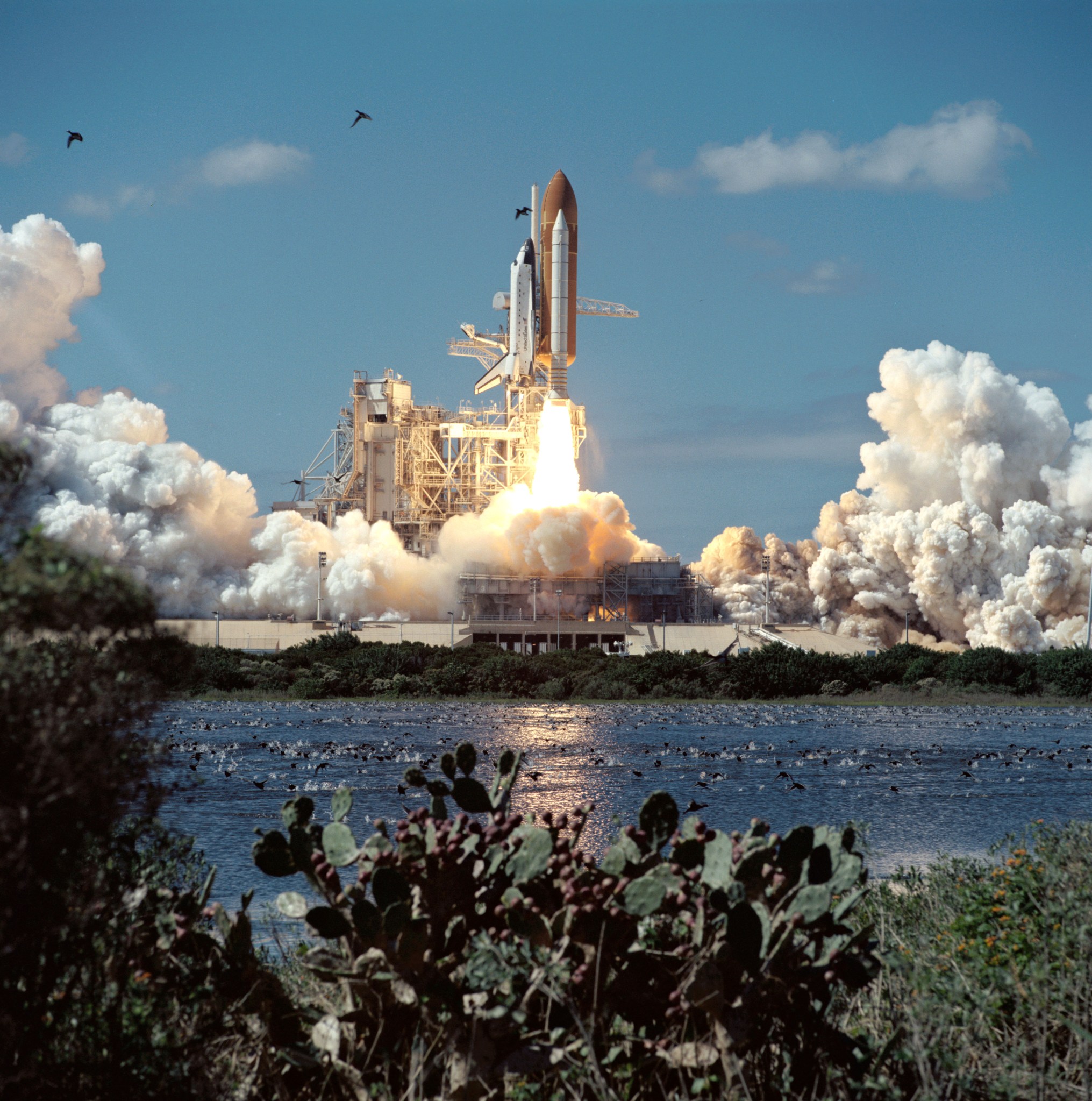
This week in 1994, space shuttle Atlantis returned to work for its first flight since July 1992 after being refurbished. STS-66 advanced comprehensive efforts to collect data about sun’s energy output, the chemical makeup of the Earth’s middle atmosphere and how these factors affect global ozone levels. NASA missions and researchers address some of the critical challenges facing our planet today and in the future, such as climate change, sea level rise, freshwater resources and extreme weather events. The NASA History Program is responsible for generating, disseminating and preserving NASA’s remarkable history and providing a comprehensive understanding of the institutional, cultural, social, political, economic, technological and scientific aspects of NASA’s activities in aeronautics and space. For more pictures like this one and to connect to NASA’s history, visit the History Program’s webpage. (NASA)
Highlights of the Von Braun Symposium Featured on ‘This Week @NASA’
The ninth annual Wernher von Braun Symposium, hosted by the American Astronautical Society and NASA’s Marshall Space Flight Center, was held Oct. 25-27 at the University of Alabama in Huntsville, and is featured in the latest edition of “This Week @NASA,” a weekly video program broadcast nationwide on NASA-TV and posted online.
The theme of this year’s von Braun Symposium was “Exploring the Universe and Maintaining U.S. Leadership in Space.” At the Oct. 27 dinner event, NASA Administrator Charles Bolden was presented the von Braun Space Flight Trophy, awarded by the Huntsville chapter of the National Space Club to individuals or organizations that have made great achievement in advancing spaceflight programs and contributing to U.S. leadership in the fields of rocketry and astronautics.
The event also featured NASA Deputy Administrator Dava Newman, Marshall Center Director Todd May and Apollo 17 astronaut Harrison Schmitt, the only scientist to walk on the moon.
View this and previous episodes at “This Week @NASA” or at https://www.youtube.com/user/NASAtelevision.
Obituaries
Robert W. Milner Jr., 88, of Huntsville, died Oct. 26. He retired from the Marshall Center in 1981 as an electrical engineer. He is survived by his wife, Louneal Pinkston Milner.
Thomas A. Torres, 71, of Huntsville, died Oct. 27. He retired from the Marshall Center in 2011 as an aerospace engineer.










